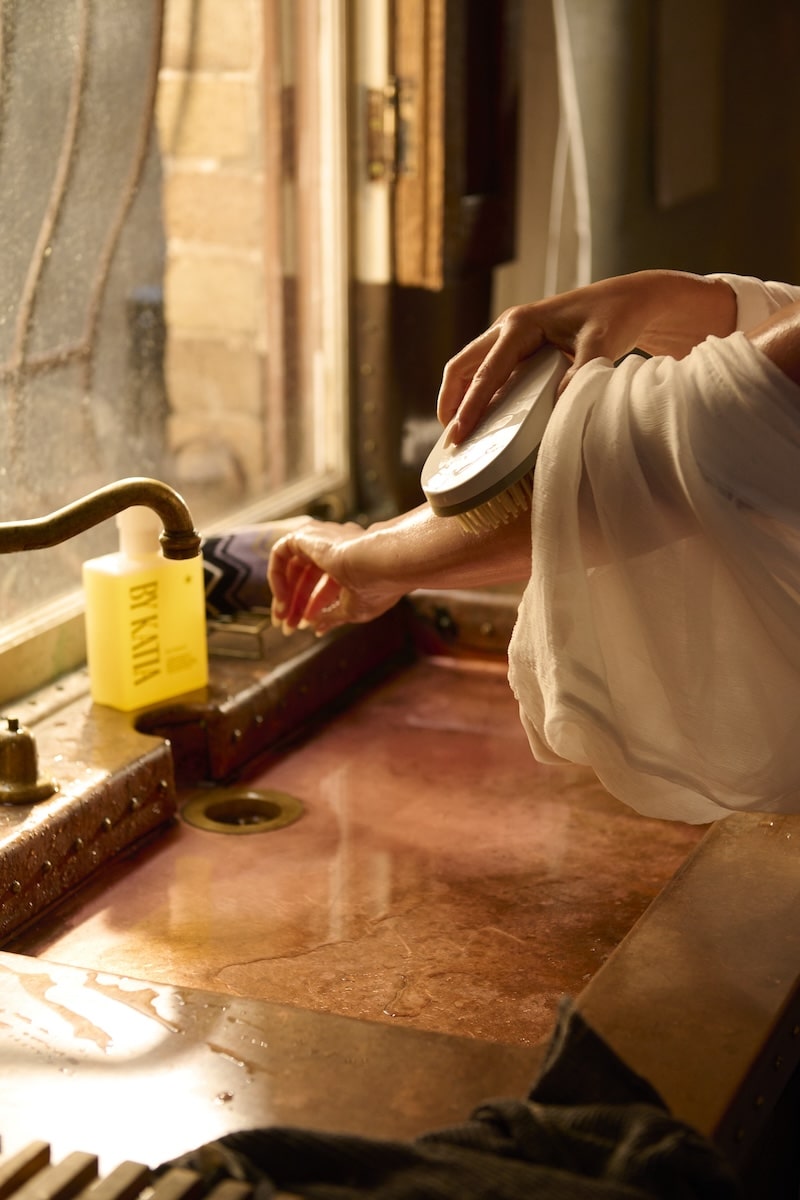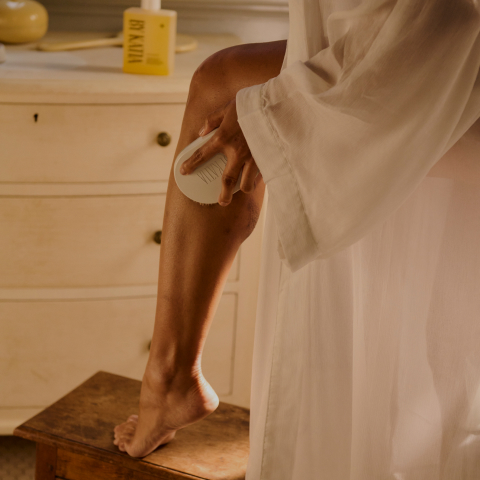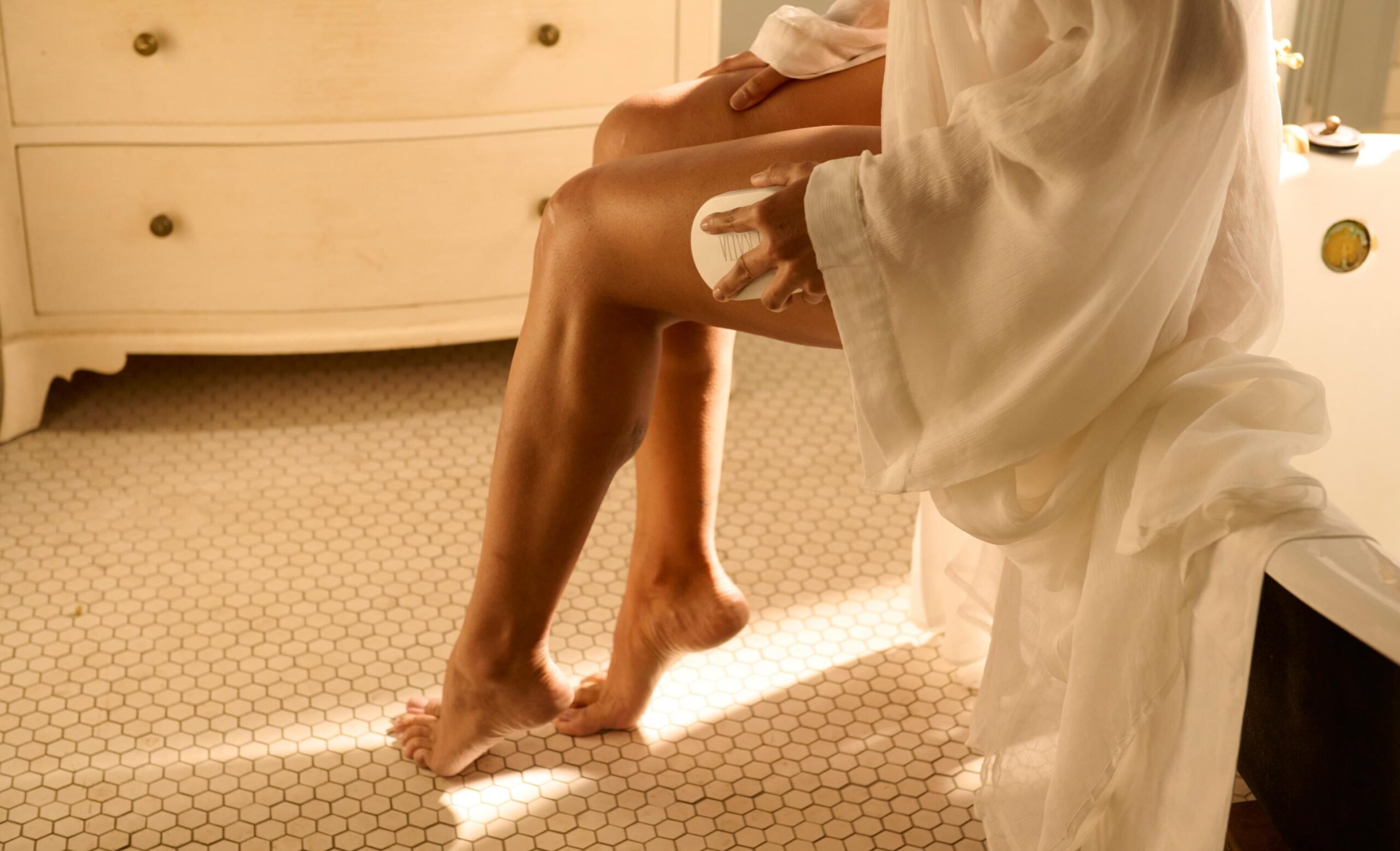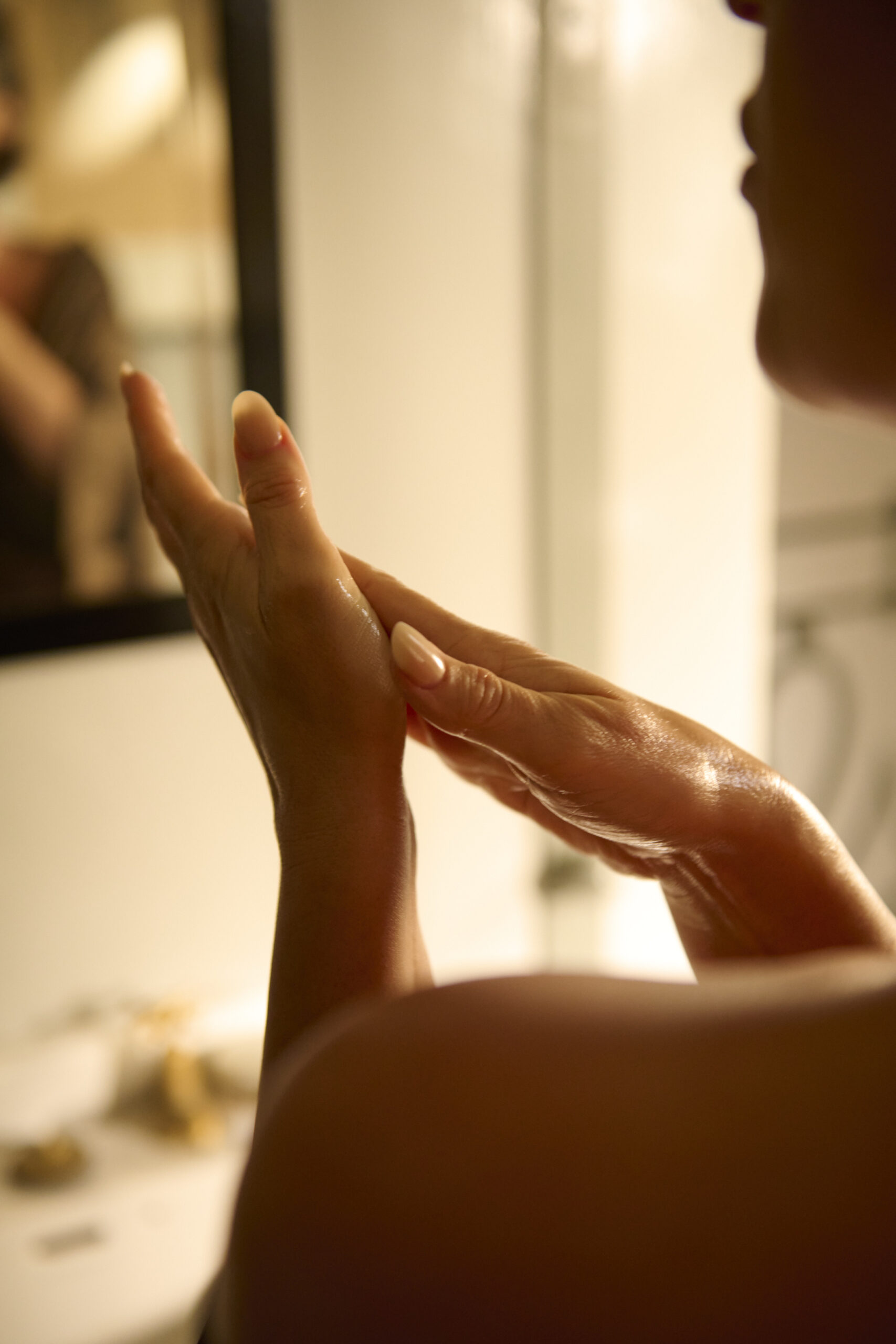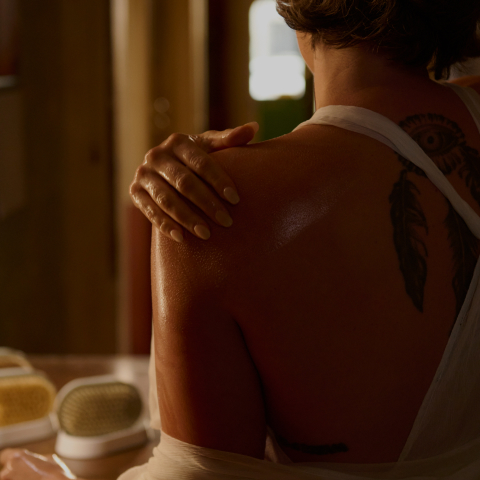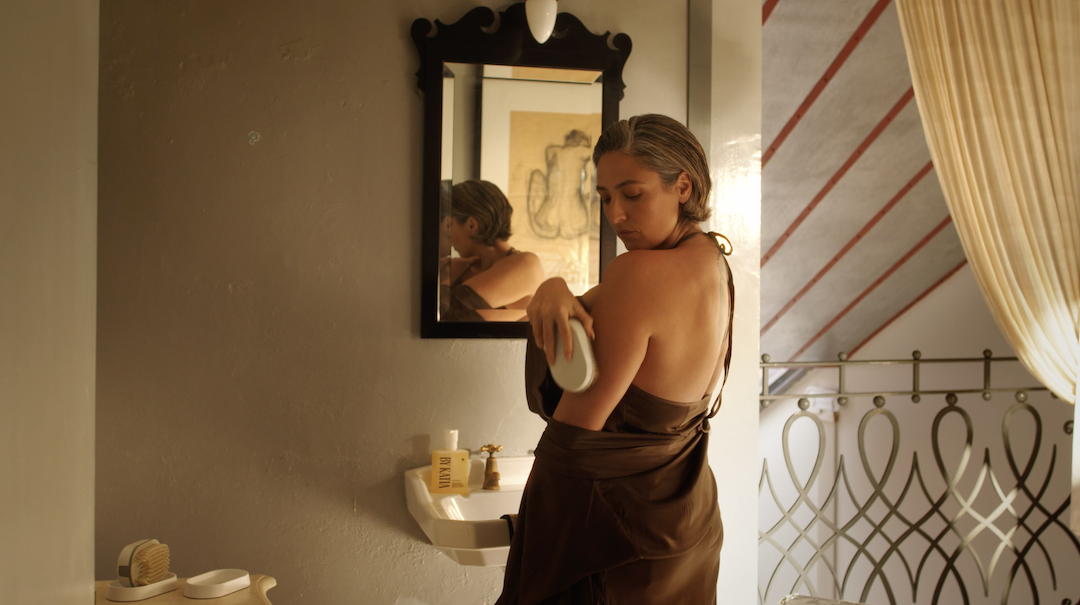The chest is one of the most sensitive areas of the body, with thinner skin and more sebaceous glands than other regions. This makes it more prone to redness, breakouts, and irritation, especially when exfoliating. Unlike the arms or legs, the chest requires a gentler approach. If you’re incorporating dry brushing your chest into your routine, using ultra-soft bristles and light pressure is key to protecting this delicate area while still enjoying the benefits.
What Are the Health and Skincare Benefits?
Improvement in Skin Texture
Dry brushing the chest regularly helps slough off dead skin cells, encouraging smoother, more even skin. This gentle exfoliation can also unclog pores, which may reduce the frequency and severity of chest acne. Over time, your skin may feel softer and appear more radiant, especially with a hydrating body cleansing oil.
Enhanced Lymphatic and Circulatory Function
When done with light, intentional strokes, dry brushing can stimulate blood circulation and support lymphatic drainage. These processes are essential for detoxification and skin vitality. Improved circulation delivers nutrients more efficiently to the skin’s surface, while lymphatic flow helps flush toxins from the body, enhancing overall skin health.
Emotional and Energetic Uplift
Beyond physical benefits, dry brushing offers a calming, meditative moment in your self-care routine. The rhythmic strokes and tactile experience can help relieve tension, boost energy, and create a sense of grounding. For many, it becomes a daily ritual that supports both inner and outer wellness.
How to Dry Brush the Chest Correctly (Step-by-Step)
Step 1: Preparation Before Brushing
Before you begin, prep your skin and tools to ensure a safe and effective dry brushing session.
- Ensure your skin is clean and completely dry. This prevents bacteria from spreading and allows the brush to exfoliate effectively.
- Inspect your brush. Make sure it’s clean, dry, and has soft natural bristles—avoid using stiff or worn brushes on the chest.
- Choose a comfortable location. Standing in the shower (with the water off) is ideal to catch dead skin flakes and make cleanup easier.
Step 2: Brushing Technique
Before brushing, begin with lymphatic activation to prepare your body’s natural detox pathways. Using your index and middle fingers, gently pulse over key lymph nodes: just beneath your collarbone, behind your ears, and under your arms. This step is inspired by traditional practices and helps initiate flow before exfoliation.
Then proceed with dry brushing:
- Start at the center of your chest and use light, circular motions outward toward the shoulders and underarms.
- Avoid brushing over sensitive, broken, or inflamed skin.
- Limit brushing to no more than 30 seconds to prevent irritation.
Step 3: Post-Brushing Care
After brushing, step into a warm shower to rinse away loosened dead skin cells. Use a gentle cleanser if desired.
Instead of conventional moisturisers or aloe vera gels, which often contain harmful additives, nourish your skin with By Katia’s soothing botanical blends, formulated especially for sensitive post-exfoliation skin. These products honour traditional self-care rituals while embracing modern, non-toxic formulations.
Opt for breathable cotton clothing afterwards to minimise irritation and support skin healing.
Find The Best Dry Brush for Your Chest
Dry brushing the chest requires extra care, and the right tool makes all the difference. This delicate area benefits most from soft, natural bristles that gently exfoliate without irritating sensitive skin.
If you’re looking to add this ritual to your skincare routine, the dry brush from By Katia is thoughtfully designed for comfort and effectiveness. With its gentle texture and elegant craftsmanship, it helps smooth skin, support circulation, and bring a touch of calm to your daily self-care.
